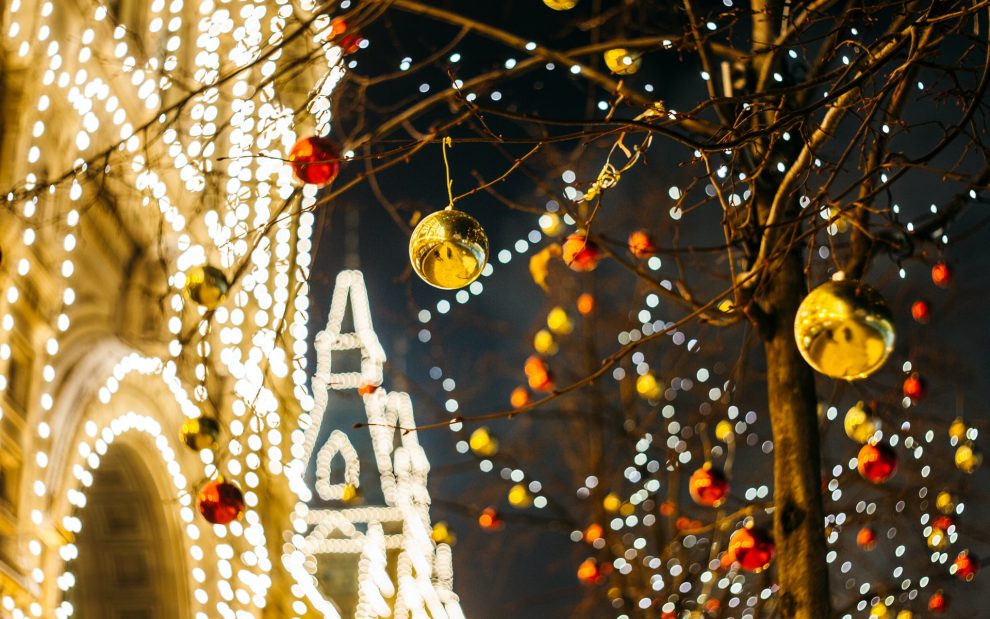Maybe it’s different for people who live in the neon glow of the Vegas strip or for people from New York, the city that never sleeps. But I hail from rural Wisconsin, where life—for those still in the business of farming—is marked largely by the rising and setting of the sun. As soon as it’s bright enough to wade through a field without stepping in cow poop, the cows are called in for milking. In winter, evening milking means calling the cows back into the barn before darkness sets in at 4 or 5 in the afternoon.
City people who struggle to spot constellations through a haze of light pollution overhead probably have less appreciation for just how dark it can get. It’s why Daylight Savings Time was invented. It’s also why Christmas came along.
Christmas, as you may know, wasn’t always tethered to December. Sure, early Christians started to celebrate Jesus’ birth in addition to commemorating his death. But there was no general agreement about when he was actually born. Not until the 300s did Christmas become a winter celebration.
The holy day got pinned to this darkest time of the year to help replace pagan worship of the sun god Sol—to whom ancients would turn when they just couldn’t stomach the darkness anymore, petitioning and praying for the return of the life-giving sun. At this gloomy time, it came to pass: The god of the sun was eclipsed by the Sun of God.
That’s probably why I, with my mild case of seasonal affective disorder, love so many of Isaiah’s lines that illuminate our celebration of Advent. “The people that walked in darkness have seen a great light” (Isa. 9:2). “Arise, shine; for your light is come, and the glory of the Lord is risen upon you” (Isa. 60:1).
Isaiah’s hopeful verses are like a unifying voiceover to countless displays of Christmas lights dotting the darkened horizon. Over here, a fringe of white icicle lights frames the roofline of your neighbor’s ranch house; over there, a multihued explosion of lights adorns the shrubbery that fronts your friend’s Cape Cod. “I will make darkness light before them, and crooked places straight” (Isa. 42:46).
Isaiah’s hopeful verses are like a unifying voiceover to countless displays of Christmas lights dotting the darkened horizon.
You remember what it’s like to be 8 years old again as your eyes adjust to the cacophony of lights next door—the large weather-faded duo of Santa and Mrs. Claus that still manage to glow in the dark, a cordon of 3-foot lighted candy canes that line the front walk, an entire life-size plastic Nativity ensemble, with Mary’s blue robe giving off the most unnatural light, Joseph trying to look humble despite his incandescence, and angels piercing the darkness thanks to extension cords instead of Excelsis Deo. “Nations shall come to your light, and kings to the brightness of your dawn” (Isa. 60:3).
I like the simple lights in the windows; my kids go for the gaudiest yard they can find. It’s become family tradition for us to go see the many ways people celebrate with lights at this time of year. When we lived in Chicago, it was easy: We slipped boots and coats over their pajamas and walked around the block. Now, in Wisconsin, we drive to a neighboring town or watch for farmhouses that pierce the darkness as they blossom with color against a desert of black.
At a time when we wonder if the lights on our houses too closely resemble the neon that blazes out a message of commerce, a multitude of glowing bulbs reminds me of all the descendants promised Abraham and Sarah.
The older I get, though, and the more I gaze at Christmas lights, the more I remember a candlelight vigil I took part in one early December. Hundreds of us huddled in the cold Chicago darkness, at the given moment touching wick to wick to light a sea of white candles to remember four Catholic women who were raped and murdered in El Salvador for all the Isaiah-like hope they were giving to the poor. At a time when we wonder if the lights on our houses too closely resemble the neon that blazes out a message of commerce, a multitude of glowing bulbs reminds me of all the descendants promised Abraham and Sarah.
I am comforted to know that we who worship the Lord of Light and walk in the ways he illuminated are as countless as the lights that hug every twig on every decorated tree. And unlike those old, maddening sets of twinkle lights, whole strings of us will go on burning brightly even if one among us burns out.
Image: Unsplash/Marina Khrapova













Add comment